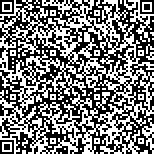| 引用本文: | 王若绮,尤文雯,周宇姣,汪丽霞,周锦仁,高志伟,陈昆松,李鲜,刘意隆.基于“肠道菌群-胆汁酸代谢”的衢枳壳黄烷酮提取物降糖降脂功效研究[J].中国现代应用药学,2024,41(21):89-102. |
| Wang Ruoqi,You Wenwen,Zhou Yujiao,Wang Lixia,Zhou Jinren,Gao Zhiwei,Chen Kunsong,Li Xian,Liu Yilong.Study on Hypoglycemic and Lipid-lowering Effects of Flavanone Extracts from Quzhou Fructus Aurantii Based on 'Gut Microbiota-Bile Acid Metabolism'[J].Chin J Mod Appl Pharm(中国现代应用药学),2024,41(21):89-102. |
|
| |
|
|
| 本文已被:浏览 485次 下载 437次 |

码上扫一扫! |
|
|
| 基于“肠道菌群-胆汁酸代谢”的衢枳壳黄烷酮提取物降糖降脂功效研究 |
|
王若绮1, 尤文雯1, 周宇姣1, 汪丽霞2, 周锦仁3, 高志伟3, 陈昆松1, 李鲜1, 刘意隆1
|
|
1.浙江大学;2.常山县农业特色产业发展中心;3.浙江大学医学院附属第二医院
|
|
| 摘要: |
| 目的 基于肠道菌群和胆汁酸代谢探讨衢枳壳黄烷酮提取物及其主要单体新橙皮苷的降糖降脂作用机制。方法 将C57BL/6小鼠随机分为对照组、模型组、二甲双胍阳性药组(200 mg·kg-1·d-1)、奥利司他阳性药组(15.6 mg·kg-1·d-1)、衢枳壳组(300 mg·kg-1·d-1)、新橙皮苷低剂量组(50 mg·kg-1·d-1)和高剂量组(100 mg·kg-1·d-1)。对照组给予普通饲料、灌胃生理盐水,模型组给予高脂饲料、灌胃生理盐水,其余各组给予高脂饲料并灌胃相应药物,每日一次,持续13周。期间每周监测小鼠体重,第8周和第9周测定空腹血糖,第10周和第11周分别进行OGTT和ITT测试。实验结束后,取小鼠肝脏和脂肪组织称重,通过HE和油红O染色观察肝脏组织病理变化。利用液相色谱串联质谱(LC-MS/MS)测定小鼠血清、肝脏和粪便中的胆汁酸成分,并通过16S rRNA基因测序分析肠道菌群变化。结果 衢枳壳和新橙皮苷显著减少肥胖小鼠的腹部脂肪积累,降低体重,缓解高脂饮食诱导的肝脏脂滴积累和脂肪细胞膨大,降低空腹血糖水平,提高葡萄糖耐受性。胆汁酸代谢组学分析表明,衢枳壳显著降低了血清中牛磺鹅去氧胆酸(P<0.05)和粪便中α-甲基胆酸(P<0.05)、β-甲基胆酸(P<0.05)水平,高剂量新橙皮苷显著降低了肝脏中牛磺β-甲基胆酸的水平(P<0.01),且提高了熊去氧胆酸的水平(P<0.05)。此外,衢枳壳和高剂量新橙皮苷有效调节高脂饮食诱导的小鼠肠道菌群失调,显著增加了益生菌嗜黏蛋白阿克曼菌(Akkermansia_muciniphila)的相对丰度(P<0.05),降低了致病菌Romboutsia_ilealis的相对丰度(P<0.01)。结论 富含黄烷酮的衢枳壳提取物和新橙皮苷具有良好的降糖降脂功效,可能通过调节肠道菌群和胆汁酸代谢从而改善糖脂代谢紊乱。 |
| 关键词: 衢枳壳 新橙皮苷 肠道菌群 胆汁酸代谢 糖脂代谢 |
| DOI: |
| 分类号: |
| 基金项目: |
|
| Study on Hypoglycemic and Lipid-lowering Effects of Flavanone Extracts from Quzhou Fructus Aurantii Based on 'Gut Microbiota-Bile Acid Metabolism' |
|
Wang Ruoqi1, You Wenwen1, Zhou Yujiao1, Wang Lixia2, Zhou Jinren3, Gao Zhiwei3, Chen Kunsong1, Li Xian1, Liu Yilong1
|
|
1.Zhejiang University;2.Changshan Characteristic Industry Development Center;3.the Second Affiliated Hospital of Zhejiang University School of Medicine
|
| Abstract: |
| OBJECTIVE To explore the hypoglycemic and lipid-lowering mechanisms of Quzhou Fructus Aurantii (QFA) flavanone extract and its primary monomer, neohesperidin, based on gut microbiota and bile acid metabolism. METHODS C57BL/6 mice were randomly divided into seven groups including control group, model group, metformin positive drug group (200 mg·kg-1·d-1), orlistat positive drug group (15.6 mg·kg-1·d-1), QFA group (300 mg·kg-1·d-1), low-dose neohesperidin group (50 mg·kg-1·d-1), and high-dose neohesperidin group (100 mg·kg-1·d-1). The control group was given regular chow and saline via gavage, while the model group received a high-fat diet (HFD) and saline via gavage. All other groups were given HFD and the corresponding drugs by gavage once daily for 13 weeks. Body weight was recorded weekly, and fasting blood glucose was measured in weeks 8 and 9, with OGTT and ITT tests performed in weeks 10 and 11, respectively. At the end of the experiment, liver and fat samples were collected and weighed. Histopathological changes in liver tissues were observed using HE and Oil Red O staining. Bile acid components in the serum, liver, and feces were measured by liquid chromatography-tandem mass spectrometry (LC-MS/MS), and changes in gut microbiota were analyzed using 16S rRNA gene sequencing. RESULTS QFA extract and neohesperidin significantly reduced abdominal fat accumulation, decreased body weight, alleviated lipid droplet accumulation and adipocyte hypertrophy in the liver induced by an HFD, lowered fasting blood glucose, and improved glucose tolerance. Metabolomics analysis of bile acids showed that QFA extract significantly reduced serum taurochenodeoxycholic acid (P<0.05) and fecal α-muricholic acid and β-muricholic acid (P<0.05) levels. High-dose neohesperidin significantly reduced the level of hepatic tauro-β-muricholic acid (P<0.01) and increased the level of hepatic ursodeoxycholic acid (P<0.05). Additionally, both QFA extract and high-dose neohesperidin modulated HFD-induced gut microbiota dysbiosis, significantly increased the relative abundance of the probiotic Akkermansia_muciniphila (P<0.05) and decreased the relative abundance of the pathogenic bacterium Romboutsia_ilealis (P<0.01). CONCLUSION QFA extract rich in flavanones as well as neohesperidin exhibit promising hypoglycemic and lipid-lowering effects, potentially by regulating gut microbiota and bile acid metabolism to improve disorders of glucose and lipid metabolism. |
| Key words: Quzhou Fructus Aurantii neohesperidin gut microbiota bile acid metabolism glucose and lipid metabolism |
|
|
|
|
